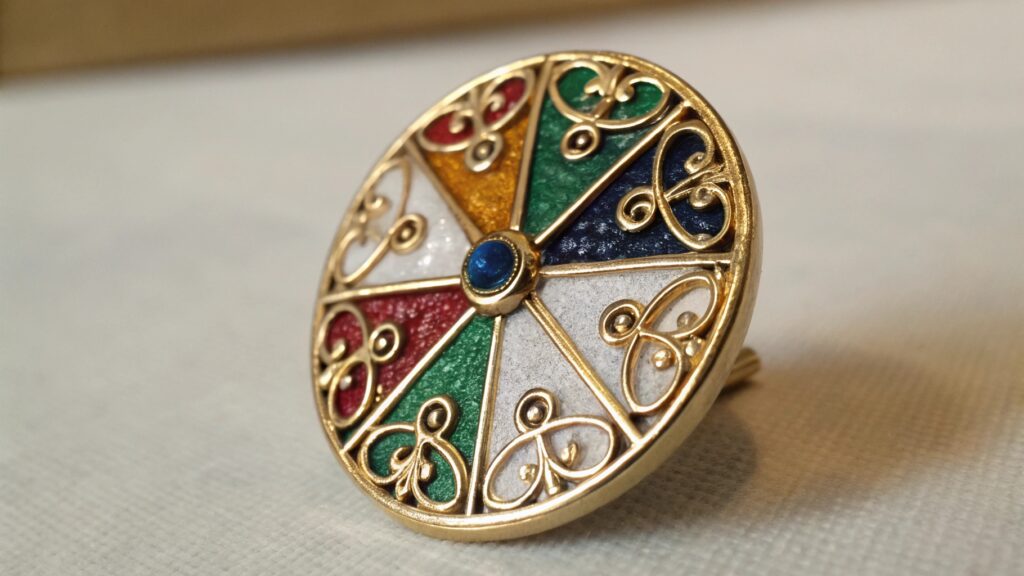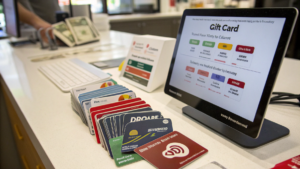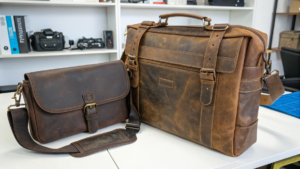Custom Enamel Badges: What Makes Them Special?
Are you looking for a unique way to brand? Many businesses consider custom enamel badges. What makes them stand out from other options?
Custom enamel badges are special because they offer a durable, high-quality, and highly customizable way to represent a brand, event, or message. They combine metal craftsmanship with vibrant colors, creating a lasting and tangible item that captures attention.

I have seen countless branding tools in my career, but custom enamel badges always catch my eye. I remember working with a startup that wanted something memorable for their launch. Instead of just business cards, we designed a small, intricate enamel badge with their new logo. The feedback was amazing. People kept it, wore it, and talked about it. It showed me how a well-made badge can be more than just an item; it is a conversation starter and a symbol of identity.
Why are enamel pins so expensive?
Do you find enamel pins pricey? Many people wonder why these small items cost so much. What if the price reflects hidden craftsmanship and quality?
Enamel pins can be expensive due to the detailed craftsmanship1 involved, including multiple steps like die-casting, color filling by hand, and polishing. The cost reflects material quality2, production complexity, and the number of colors and finishes used, each adding to the intricate process.

I have had many conversations about the cost of enamel pins. People often see a small item and assume it should be cheap. But I know the hidden work involved. I remember a time when a client asked why a custom pin was more expensive than they thought. I walked them through the production steps: from creating the mold, to carefully filling each color, and then polishing. They were surprised by the amount of handwork and precision. It is not mass-produced like some other items; each pin is a small piece of art.
What adds to the cost?
Many things add to the cost. The design process takes time. Making the metal mold is a key step. Each color is added by hand. Then the pin needs polishing. All these steps add to the final price.
| Cost Factor | Explanation |
|---|---|
| Design Complexity | Creating a good pin design needs skill. The artist must make a design that works on a small metal surface. They need to choose colors carefully. Complex designs take more time and skill to draw. This initial design phase adds to the overall cost because it requires specialized expertise. |
| Mold Creation | Each pin design needs a metal mold. This mold is custom-made. It is usually made from steel. Creating this mold is a precise and often expensive process. The mold is used to stamp out the metal base of the pin. The more detailed the mold, the higher the cost of its creation. This is a one-time cost, but it is a significant part of the total price. |
| Material Quality | The metals used for pins, like brass or iron, affect the price. The enamel colors also vary in quality. High-quality materials cost more. They also last longer and look better. Better materials mean a better final product. This choice of materials directly impacts the unit cost. |
| Color Application | Adding enamel colors is often done by hand. Each color is filled into its own area. This needs steady hands and careful work. Some pins have many small areas to fill. This makes the process slow and labor-intensive. More colors and smaller details mean more time spent on this step, increasing production costs. |
| Polishing and Finishing | After the enamel is filled, the pins need polishing. Hard enamel pins need extra polishing to make them smooth and flat. This is a time-consuming step. Other finishes, like epoxy coating or special plating (gold, silver), also add to the cost. Each finishing process requires specific equipment and labor. |
| Order Quantity | Making pins involves setup costs. These costs are spread out over more pins for larger orders. So, smaller orders have higher per-pin costs. Larger orders benefit from economies of scale. This is why buying in bulk makes pins cheaper per unit. |
| Labor Costs | The process uses skilled workers. Their time is valuable. The labor involved in each step, from mold making to final inspection, adds up. Hand-filling and polishing, especially, require careful human touch. These labor costs are a big part of the overall production expense. |
| Special Features | Some pins have special features. These include glitter, glow-in-the-dark enamel, cut-outs, or spinning parts. These features add complexity to the production process. They require extra materials and more specialized manufacturing steps. This makes the pins more unique but also more expensive to produce. |
| Quality Control | Each pin needs to be checked for flaws. This ensures high quality. Quality control takes time and trained staff. Any imperfect pins are removed. This ensures that only the best pins reach the customer. This thorough inspection process adds to the overall production cost. |
| Shipping and Packaging | Shipping costs can add up, especially for international orders. Custom packaging also adds to the expense. How the pins are packed ensures they arrive safely. These logistics and presentation costs are part of the total price. They ensure the product reaches the customer in perfect condition and is presented well. |
What are the different types of enamel pins?
Are you new to collecting enamel pins? The options can seem endless. What if understanding the types helps you choose the perfect one?
Besides hard and soft enamel, other types of enamel pins include die-struck pins (metal-only), photo-etched pins (for complex designs), and offset printed pins (for photographic images). Each type offers unique visual effects and production methods to suit different design needs.

In my experience, clients often think "enamel pin" means just one thing. But I know the world of pins is much bigger. I have helped many businesses choose the right type for their campaigns. Once, a client wanted a pin with a very detailed gradient image. They thought only hard or soft enamel would work. I explained that an offset printed pin would capture their design perfectly. It was a revelation to them, realizing how many possibilities exist beyond the two most common types.
What other kinds of pins are there?
There are more pin types. Each one has a special look. Some are just metal. Some use printing. Knowing these helps you pick the best pin for your design.
| Enamel Pin Type | Explanation |
|---|---|
| Die Struck Pins | These pins have no enamel colors. They are made entirely of metal. The design is stamped into the metal. Raised and recessed areas create the image. They often have polished and sandblasted finishes for contrast. These pins offer a classic, elegant look. They are good for a subtle brand presence or for awards. They highlight the metal's texture and shine. They are durable and timeless in appearance. |
| Photo Etched Pins | For designs with very fine details or gradients, photo-etched pins are a good choice. The design is etched onto the metal using a photographic process. Then, enamel colors are filled in. This method allows for thinner metal lines and more intricate designs than die-struck methods. It is suitable for designs that are too complex for traditional hard or soft enamel methods. They offer a good balance of detail and color. |
| Offset Printed Pins | These pins are used when a design has many colors, gradients, or needs to reproduce a photographic image. The design is printed directly onto the metal base. Then, a clear epoxy dome is usually applied over the print. This protects the image and gives a smooth, glossy finish. They do not have raised metal lines or recessed enamel areas. They are perfect for highly detailed artwork or reproducing logos with specific color requirements. |
| Sliding Pins | Sliding pins have a movable part that slides across the pin's surface. This adds an interactive element. Two layers of metal are used. One layer has the design, and the other has a cutout for the sliding piece. These pins are popular for storytelling or showing progress. They create a fun, engaging experience. They are more complex to produce due to the moving parts. |
| Spinning Pins | Similar to sliding pins, spinning pins also have a movable element. A part of the pin rotates on an axis. This creates a dynamic visual effect. They use a bearing or pivot point to allow the rotation. These pins are great for interactive designs or showing different sides of a concept. They add an element of playfulness and are highly noticeable. Their production involves precise engineering. |
| Glitter Enamel Pins | Glitter can be added to either hard or soft enamel. Glitter powder is mixed into the enamel before it is filled into the pin. This gives the colors a sparkly effect. It adds extra visual appeal and can make a design stand out. It is often used for whimsical, magical, or celebratory themes. The amount and type of glitter can be customized to achieve different levels of shimmer. |
| Glow-in-the-Dark Pins | Special glow-in-the-dark pigment is mixed into the enamel. These pins absorb light and then emit a glow in the dark. This feature is often used for spooky or mystical designs. It adds a surprising element that can be very engaging. The glow effect typically works best with lighter enamel colors. This adds a unique functionality that makes the pin more memorable. |
| Screen Printed Pins | For designs that require very sharp, crisp lines or fine text, screen printing can be used. Ink is applied directly onto a metal base. This method is good for designs that might lose detail with traditional enamel filling. A clear epoxy coating is often added over the screen print for protection and a smooth finish. This allows for very intricate graphical details that might be difficult to achieve with other methods. |
| Epoxy Coated Pins | An epoxy coating is a clear resin applied over the entire pin surface. It gives a smooth, glossy finish. It also protects the pin from scratches and wear. This coating can be applied to both hard and soft enamel pins, as well as printed pins. It enhances durability and gives a polished look. It is especially common on soft enamel pins to make them feel smoother and more protected. |
| 3D Molded Pins | These pins are created from a 3D mold, allowing for complex, sculpted designs that have depth and relief. They are not flat like traditional enamel pins. The metal itself forms the design. These pins do not usually have enamel colors; the focus is on the sculpted metal. They are suitable for highly detailed objects or characters that need a dimensional representation. They offer a premium, artistic feel due to their sculptural quality. |
What is the difference between hard enamel and soft enamel keychains?
Are you picking between keychain types? Keychains are not just about design. What if the material choice impacts durability and feel?
The difference between hard and soft enamel keychains is the same as for pins: soft enamel keychains have recessed color areas and raised metal lines, providing a textured feel, while hard enamel keychains have a smooth, flat surface where the color is polished flush with the metal, making them more durable.

When I advise clients on keychains, I always stress that they are not just tiny billboards. They are tools people use every day. I remember a client who wanted a keychain for an outdoor event. They initially leaned towards soft enamel for the tactile feel. But I suggested hard enamel instead. Keychains take a lot of abuse in pockets and bags. The durability and scratch resistance of hard enamel made it the better choice for something used daily, ensuring their brand would look good for a long time. It was about practicality as much as aesthetics.
How do they differ in use?
The main difference is how they feel and how long they last. Soft enamel gives a textured feel. Hard enamel is smooth and tough. This choice affects how the keychain is used and what message it sends.
| Feature | Hard Enamel Keychains | Soft Enamel Keychains |
|---|---|---|
| Surface Feel/Texture | The surface is smooth and flat. The enamel colors are polished down to be level with the raised metal lines. It feels like a piece of glass or ceramic. This smooth finish is very tactile and sleek. | The surface has a textured feel. The metal lines are raised higher than the recessed enamel colors. You can feel the distinct ridges of the metal and the sunken areas of the color. This creates a tactile, dimensional effect. |
| Durability & Scratching | Highly durable and scratch-resistant. Because the enamel is flush with the metal, it is less likely to chip or scratch from daily use. It withstands more wear and tear. This makes it ideal for items that get a lot of handling, like keychains. | Less durable and more prone to scratching or chipping on the recessed enamel areas. The raised metal lines can protect the enamel somewhat, but the exposed enamel is still vulnerable. They might show wear more quickly with heavy use. |
| Appearance | Has a polished, high-quality, and often more formal look. Colors are vibrant and clear, with crisp separations. It gives a very clean and precise appearance. Often preferred for professional or premium branding. | Has a more casual, playful, and often handmade look. Colors can be vibrant, but the recessed areas create subtle shadows. The texture adds a unique visual interest. Often chosen for for artistic, comic, or pop culture designs. |
| Production Process | More complex and time-consuming. Enamel is filled, baked, and then polished multiple times until it is perfectly flat and smooth with the metal. This multi-step process adds to the production time and cost. It involves several rounds of grinding and polishing. | Simpler and faster to produce. Enamel is filled into the recessed areas and baked once. An optional epoxy coating can be added for a smooth finish and extra protection. The process requires less polishing compared to hard enamel, making it quicker. |
| Color Detail | Can achieve very crisp and precise color separation. Fine details can be replicated well. The flat surface ensures sharp lines. Colors are distinct within their compartments. | Can also achieve good color detail, but the recessed areas mean lines might appear slightly softer than hard enamel. Fine details are still possible, but the dimensional nature is the key characteristic. |
| Cost | Generally more expensive due to the longer and more labor-intensive production process involving multiple polishing stages. The higher durability also contributes to the cost. | Generally less expensive due to the simpler and quicker production process. If an epoxy coating is added, it will slightly increase the cost, but usually still remains more affordable than hard enamel. |
| Weight/Feel | Often feels heavier and more substantial due to the dense, polished enamel. The solid feel contributes to a perception of higher quality. | Can feel slightly lighter, especially if no epoxy is applied, due to the recessed areas. The tactile texture is the defining physical characteristic. |
| Common Uses | Preferred for corporate branding, luxury items, professional events, and designs that require a sleek, durable, and prestigious look. Ideal for items that will be handled frequently and need to maintain a pristine appearance over time. | Popular for creative designs, pop culture, indie art, and projects where a tactile, textured feel is desired. Often chosen for more whimsical or nostalgic designs where the dimensionality adds to the aesthetic. Also good for cost-effective bulk production. |
| Cleanliness | The flat surface makes it easier to clean. Dirt and dust are less likely to get trapped in recesses. It maintains a clean look with minimal effort. | The recessed areas can sometimes collect dust or dirt. Cleaning might require a bit more effort to ensure all crevices are clear. However, the texture itself is part of its charm. |
| Perceived Value | Often perceived as higher quality and more premium due to the smooth finish and increased durability. It suggests attention to detail and a refined aesthetic. | Perceived as more playful, artistic, and accessible. While still high quality, the tactile nature gives a different impression compared to the polished look of hard enamel. |
Conclusion
Custom enamel badges are a powerful branding tool. They offer durability, vivid designs, and a tactile presence. Choosing the right type makes your message stick.





